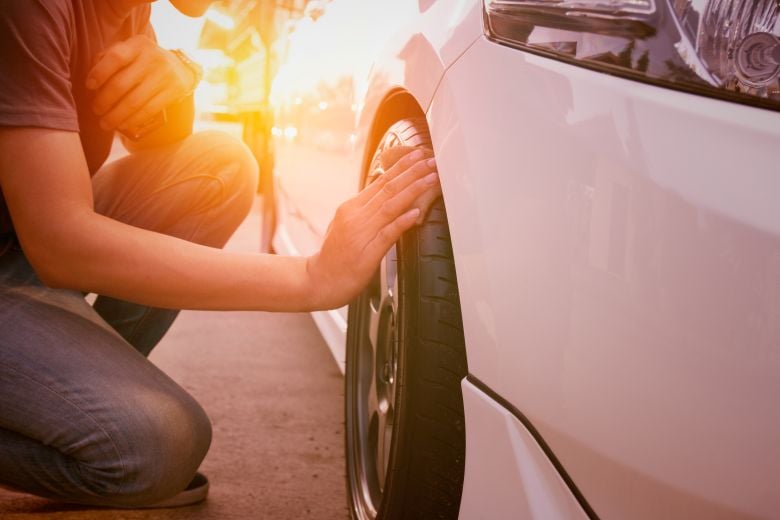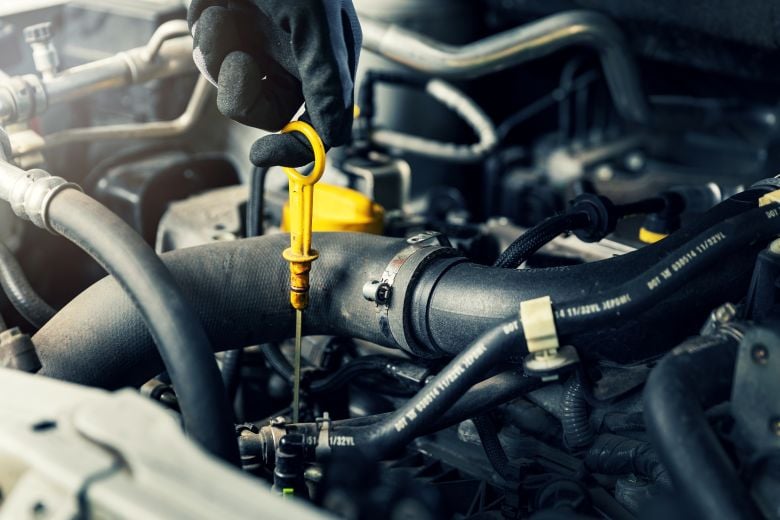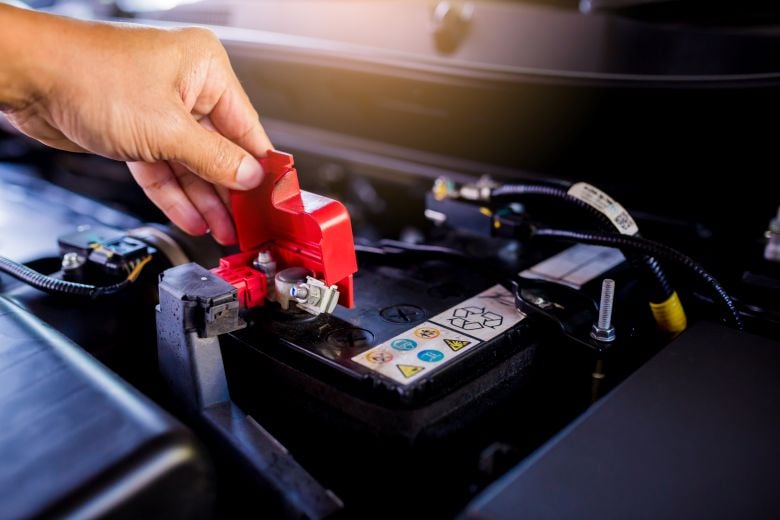
Plan a Year of Proactive Car Care
- Vehicle Maintenance
- PEAK
- April 22, 2025
Plan a better year of car care with these vital car maintenance tips.
When it comes to caring for your car, being proactive is best. Staying on top of seasonal and routine maintenance can prevent costly problems and help you avoid the inconveniences that come with fixing them.
With the calendar flipping over to a new year, now is the perfect time to start building better car care habits. These year-round car maintenance tips will help get the automotive side of your 2025 started on the right foot.


Spring Car Care
Winter is hard on your car—especially if you live in a climate that gets a lot of cold, snowy weather. As spring nears, you'll want to give your ride a little extra TLC while also prepping it for the warmer months.
Start with these three essentials:
Check your fluids
After a long winter, your vehicle's fluids might need topping up or a flush and fill. Take a look at your:
- Engine coolant
- Brake fluid
- Power steering fluid
- Transmission fluid (if you don't drive an electric vehicle)
This DIY spring car maintenance checklist offers complete details on how to perform each of these important seasonal fluid checks.
Replace your wiper blades
Winter usually brings heavy precipitation, putting a lot of wear and tear on your wiper blades. Your wipers need to be replaced if they:
- Leave streaks on your windshield
- Squeak when in use
- Skip, chatter, or miss spots
This complete guide to replacing your windshield wipers explains how to select and install new blades. For premium year-round performance, consider PEAK Silicone Platinum, Silicone Plus, or Optix wiper blades.
If your current wiper blades are still holding up, it's a good idea to at least clean them off using a clean cloth and water with a squirt of liquid dish soap or windshield wash. (Pro tip: wear rubber dishwashing gloves to protect your skin while you work.)
Swap out your winter tires
Winter tires use softer rubber compounds and specially engineered tread patterns to maintain traction, stability, and control in wet, snowy, and icy road conditions. They can be literal lifesavers during the cold-weather months, but you should replace them with all-season tires as soon as the threat of snow passes for good.
Here's why: soft rubber and engineered treads wear down quickly on warmer road surfaces. Some manufacturers say that you may reduce the lifespan of your winter tires by up to 60% if you use them year-round. You also risk a dangerous high-speed tire blowout by driving on winter tires in hot weather.


Summer Car Care
As the calendar moves into summer, you'll want to make sure your vehicle is ready to face the elevated and extreme temperatures the season can bring. In addition to checking your fluids and wiper blades like you did in the spring, you'll also want to:
Upgrade your engine oil
If you live in a particularly hot climate, a 40-weight or 50-weight engine oil will offer better protection. Consult the product packaging for the oil's viscosity rating. Look for a number followed by the letter W, with a second number next to it. This second number references the oil's operating temperature, and something in the 40-50 range will deliver superior performance in sweltering heat.
Service your air conditioning
Does your AC have a hard time cooling off your vehicle's cabin in hot weather? If so, it might be time for what's known as a "regassing." This systemic car maintenance task will quickly return your air conditioning to its optimal operating state.
Swap out your air filter
Air filters remove debris and particulate matter from the air that circulates through your vehicle's interior. You'll want clean air in your car during the summer, since you'll be spending a lot of time with the windows up and the AC humming away.
Changing an air filter is one of the easiest and most routine of yearly car maintenance tasks, and it's one you should perform annually, or around every 12,000–15,000 miles. Simply locate the filter housing, detach all connected hoses and fasteners, remove the old filter, replace it with a new one, and reconnect everything.
If you get stuck, your owner's manual will help guide you forward. For more seasonal tips, check out this comprehensive review of summer car care essentials.
Inspect your battery
Locate your battery and look for white, green, or blue buildups around the terminal connections. These indicate corrosion, which you can treat yourself with a specialized and inexpensive cleaning product you can readily find at any automotive retailer.
Also, consider when you last had your battery changed. If it's been three years or more, now is the time to have a technician check your battery's function. This is a quick, cheap, routine task that you should perform before the summer heat has a chance to start boiling away your battery fluid.


Fall Car Care
When summer turns to fall it's time to activate your cold-weather car service and maintenance plan. This in-depth guide to fall car care explains all the details, but here's a quick run-down of autumn essentials:
Top off your antifreeze
Antifreeze, also known as coolant, prevents the water in your engine from freezing into ice in cold weather, and it also inhibits a lot of internal processes that cause premature wear and tear.
PEAK Auto offers a huge lineup of high-performance antifreeze products, including formulations like:
- PEAK Original Equipment Technology™, premium coolants specifically designed to match the requirements of your vehicle
- PEAK All Vehicles all makes, all models antifreeze coolant
- PEAK Dex-Cool for General Motors vehicles manufactured after 1995
Locate your coolant reservoir, or refer to your owner's manual if you can't find it. Using a funnel, fill your reservoir tank with properly diluted antifreeze to the "F" ("full") line.
Test your brakes
You don’t want to be driving around with underperforming brakes when the rain, sleet, and snow start to hit.
Have a professional technician test your brake function, or do a simple DIY test by finding a large empty parking lot or a deserted stretch of flat road. Accelerate to city speed, then apply even pressure on the brakes and note how they respond.
Your car should slow to a smooth and predictable stop. If anything seems amiss, have your brakes serviced.
Check your lighting
Autumn also signals the impending return of the year's darkest months. If you haven't checked your exterior lighting in a while, fall is the time to do it.
Test your:
- Headlights (regular and high beams)
- Taillights
- Reverse lights
- Turn signals
This headlight guide can help you select replacement bulbs. PEAK’s Power Vision Xenon, Power Vision Gold, and Power Vision Silver bulbs provide long life, bright illumination, and excellent down-road and horizontal coverage.
Lubricate locks, windows, and weatherstripping
Get ahead of winter deep-freezes by lubricating your car's door locks, windows, and weatherstripping. This handy chart offers a high-level summary of what to do and how to do it:
| Vehicle Component | Lubricant to Use | What to Do |
| Door Locks | Graphite-based or dry Teflon lubricant | Spray the lubricant directly into your door locks as directed on the product packaging |
|
Windows |
Sprayable silicone or dry Teflon lubricant |
Open all vehicle doors Put all windows down as far as they'll go Spray the lubricant down into the open window slots (the thing slots that houses the glass) Put all windows up and down three times to distribute the lubricant evenly |
| Weatherstripping | Sprayable silicone |
Spray the lubricant into a clean, dry rag Wipe the lubricated rag over all weatherstripping to prevent freezing and sticking |
Switch your tires
As a final task, swap out your all-season tires for your winter tires a few weeks before your region normally sees its first snowfall. This will help you strike the right balance between being prepared for icy and snowy surprises and avoiding unnecessary wear on winter tires.
Winter Car Care
As a final entry in your annual car service and maintenance plan, prepare to winterize your vehicle ahead of the year's coldest weather. You'll be well-prepared for winter if you've been keeping up with your car care plan all year, but it's still important to perform a seasonal check that covers these systems and components:
- Battery function
- Headlights, taillights, and turn signals
- Fluid checks and top offs (winter is a great time to add some high-performance antifreeze like PEAK Titanium)
It's also a good idea to upgrade to PEAK Snow Beast wiper blades and stash an extra jug of PEAK De-Icer windshield wash in your trunk.
For more tips, refer to this article on winterizing your vehicle and brush up on your safety tips for driving in ice and snow. Finally, check out our ultimate road trip checklist—it explains everything you'll need for your roadside emergency kit, which you should definitely double-check before any long-distance winter road trip.
Have a great year behind the wheel, and keep your car in top shape throughout every season with the ongoing help of PEAK Auto's DIY Hub.

